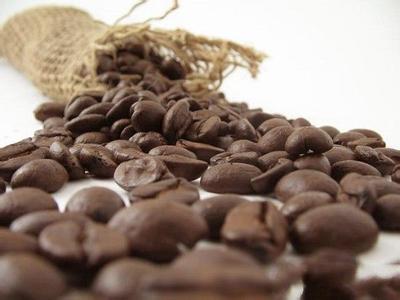Salvadoran hot spring coffee what is Salvadoran hot spring coffee? What is hot spring coffee?
El Salvador, with its upland topography, is the smallest country in Central America, flanked by Guatemala and Honduras. Because there are two parallel mountains in the country, the volcanic soil is rich in minerals, and this special geographical environment makes El Salvador suitable for growing coffee.

The coffee tree in El Salvador is Arabica, and there are mainly Bourbon and Pacas. Its coffee taste is refreshing and balanced, which is divided into three grades according to altitude, namely SHG (Strictly High Grown), SG (High Grown) and SC (Central Standard).
It is worth mentioning that the Santa Teresa Coffee Manor in El Salvador produces a kind of hot spring coffee, which gets its name from the use of hot spring water for washing treatment. Its special and supple sour taste and sweet smell are very charming. Because of its low output and high unit price, it is a very distinctive coffee.
The coffee variety of Santa Teresa Coffee Manor is Pacamara (hybrid of Bourbon and Maragogype), flowering period: April to May, harvest time: December to March, washing, natural drying. Santa Teresa Coffee Manor is located with fertile volcanic soil and rich natural hot springs. The water temperature of the fountain is 85 degrees. A 2-inch pipe is used to direct the water to six hot spring pools at different elevations. The temperature at the sixth hot spring pool is 32-34 degrees, and then the cooled hot spring water is used to process raw coffee beans. This hot spring water keeps flowing all the year round, and the local people drink it. It has a pH of 8.02 and contains ingredients that make coffee sweet.
Important Notice :
前街咖啡 FrontStreet Coffee has moved to new addredd:
FrontStreet Coffee Address: 315,Donghua East Road,GuangZhou
Tel:020 38364473
- Prev

Peruvian boutique coffee introduces the characteristics of Peruvian coffee the taste of Peruvian coffee the quality of Peruvian coffee
Peruvian coffee producing areas: up to 98% of Peruvian coffee is grown in forest areas, and most of the producers are small farmers. Peru's finest coffee is produced in Chanchmayo, Cuzco, Norte and Puno. Most Peruvian coffee is grown under natural conditions, but it is also difficult to confirm the cultivation of all coffee trees. Under natural conditions
- Next

Ecuadorian boutique coffee introduces the taste of Ecuadorian coffee the quality of Ecuadorian coffee
The Arabian Coffee Tree was first introduced to Ecuador (Ecuador) in 1952 and its coffee is of good quality, especially the coffee harvested in early June. Ecuador's coffee origin: the best Arabica coffee is produced in the Andes, especially in the Chanchagu Valley (ChanchamgoValley). The Andes are divided into two mountains, extending from south to north to central Ecuador. Ecuador
Related
- Detailed explanation of Jadeite planting Land in Panamanian Jadeite Manor introduction to the grading system of Jadeite competitive bidding, Red bid, Green bid and Rose Summer
- Story of Coffee planting in Brenka region of Costa Rica Stonehenge Manor anaerobic heavy honey treatment of flavor mouth
- What's on the barrel of Blue Mountain Coffee beans?
- Can American coffee also pull flowers? How to use hot American style to pull out a good-looking pattern?
- Can you make a cold extract with coffee beans? What is the right proportion for cold-extracted coffee formula?
- Indonesian PWN Gold Mandrine Coffee Origin Features Flavor How to Chong? Mandolin coffee is American.
- A brief introduction to the flavor characteristics of Brazilian yellow bourbon coffee beans
- What is the effect of different water quality on the flavor of cold-extracted coffee? What kind of water is best for brewing coffee?
- Why do you think of Rose Summer whenever you mention Panamanian coffee?
- Introduction to the characteristics of authentic blue mountain coffee bean producing areas? What is the CIB Coffee Authority in Jamaica?

